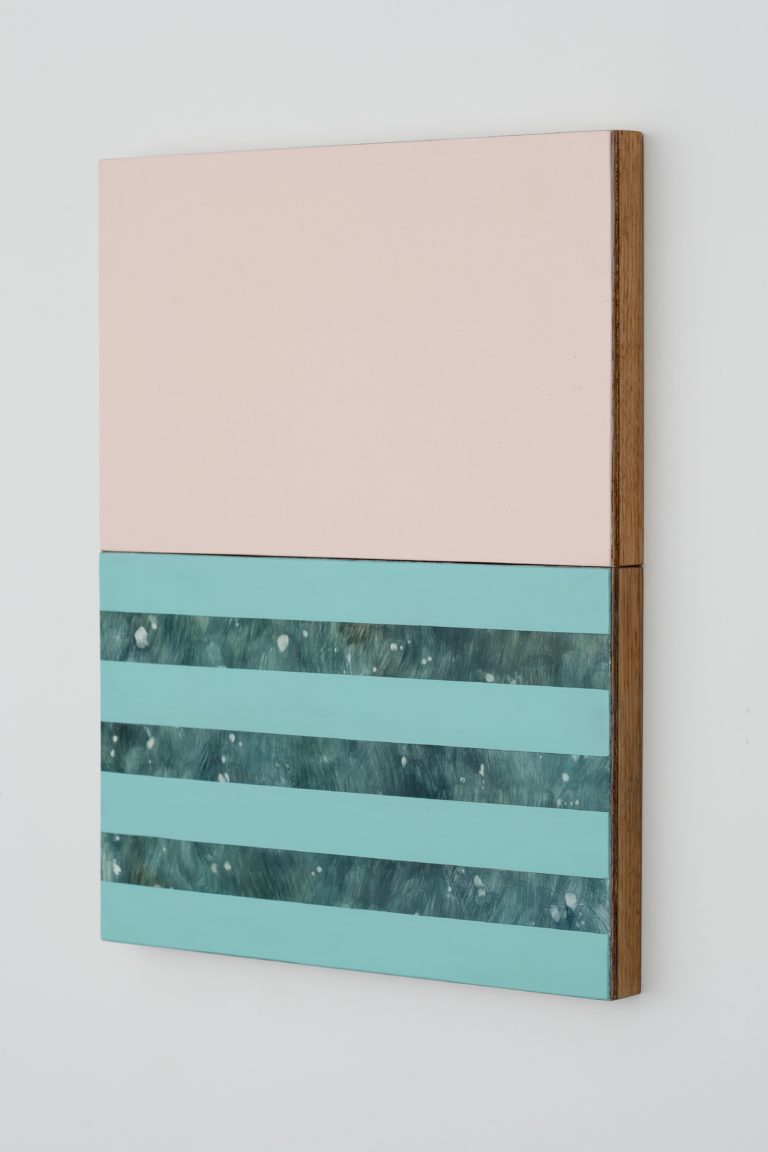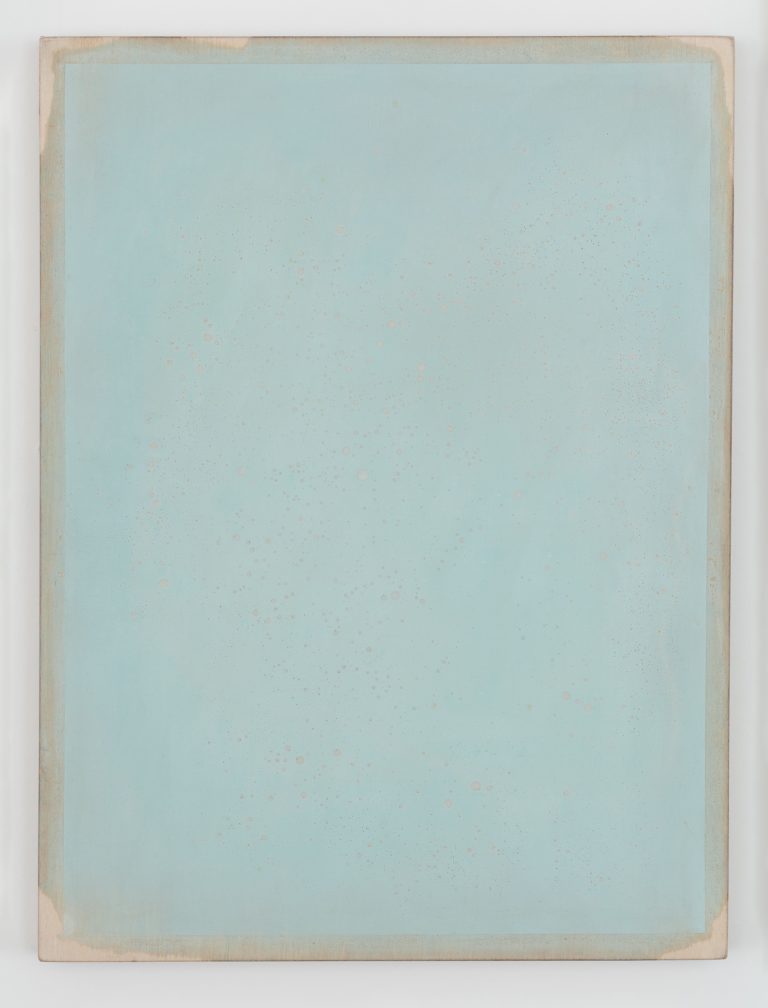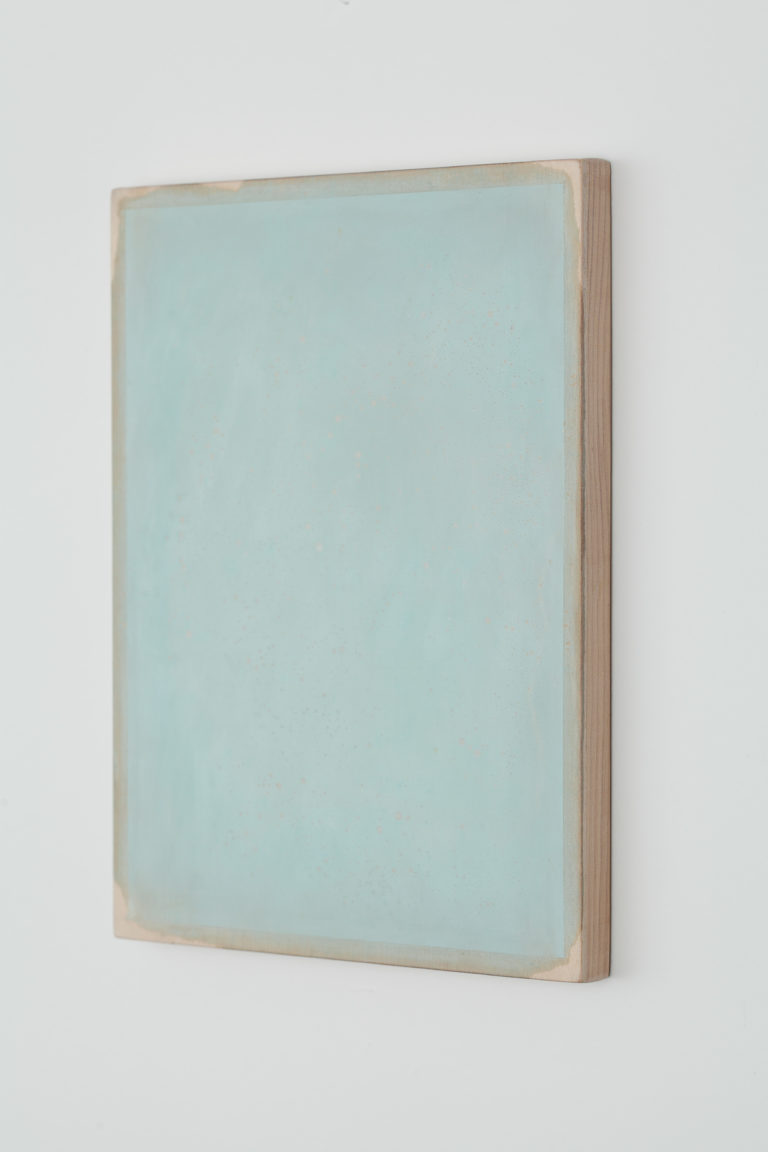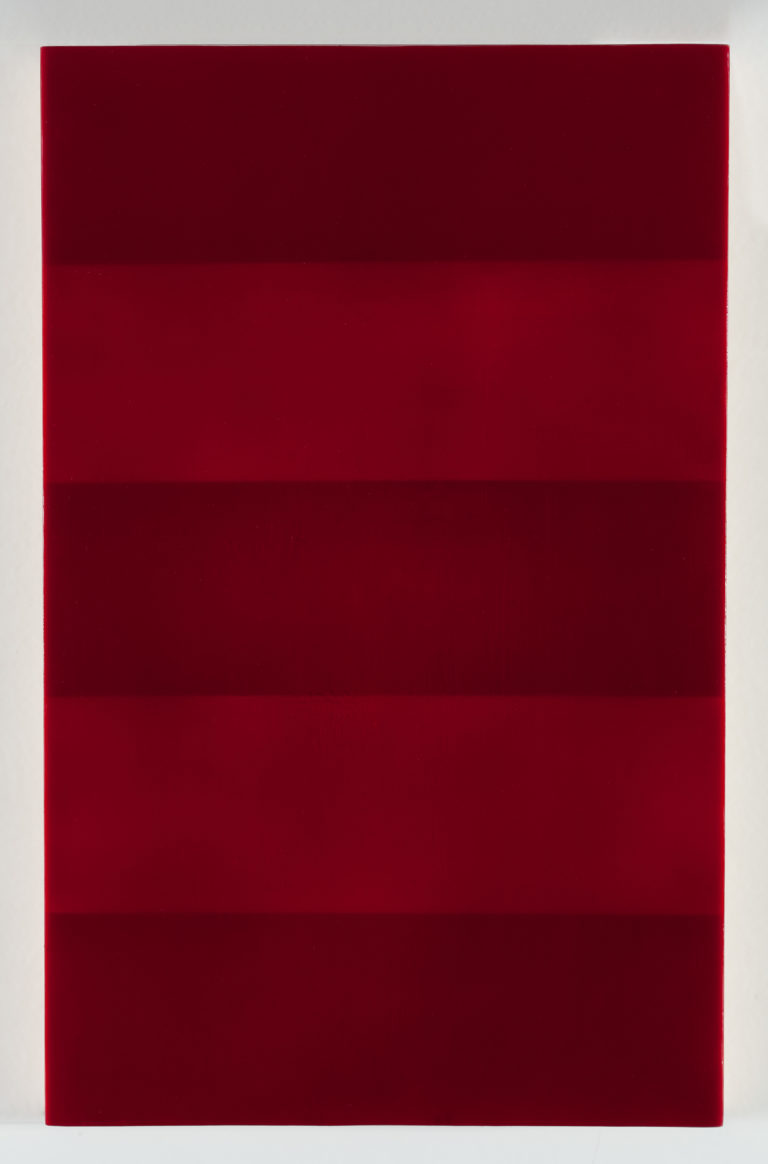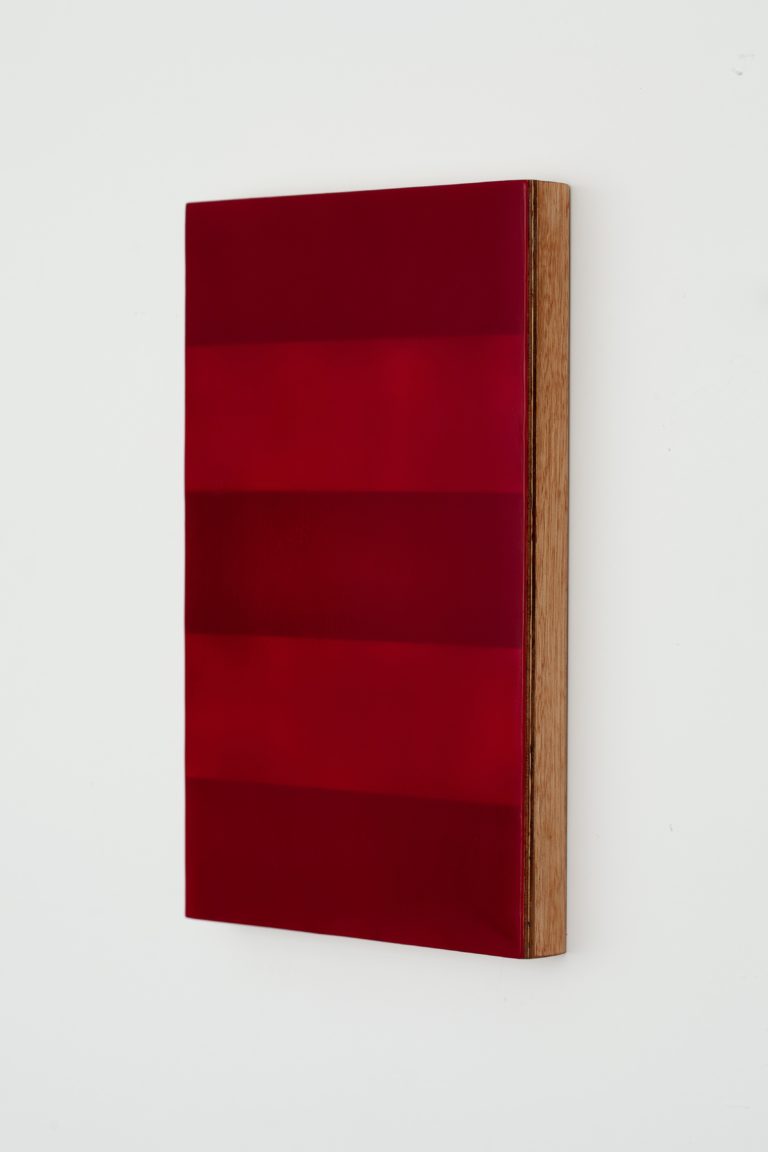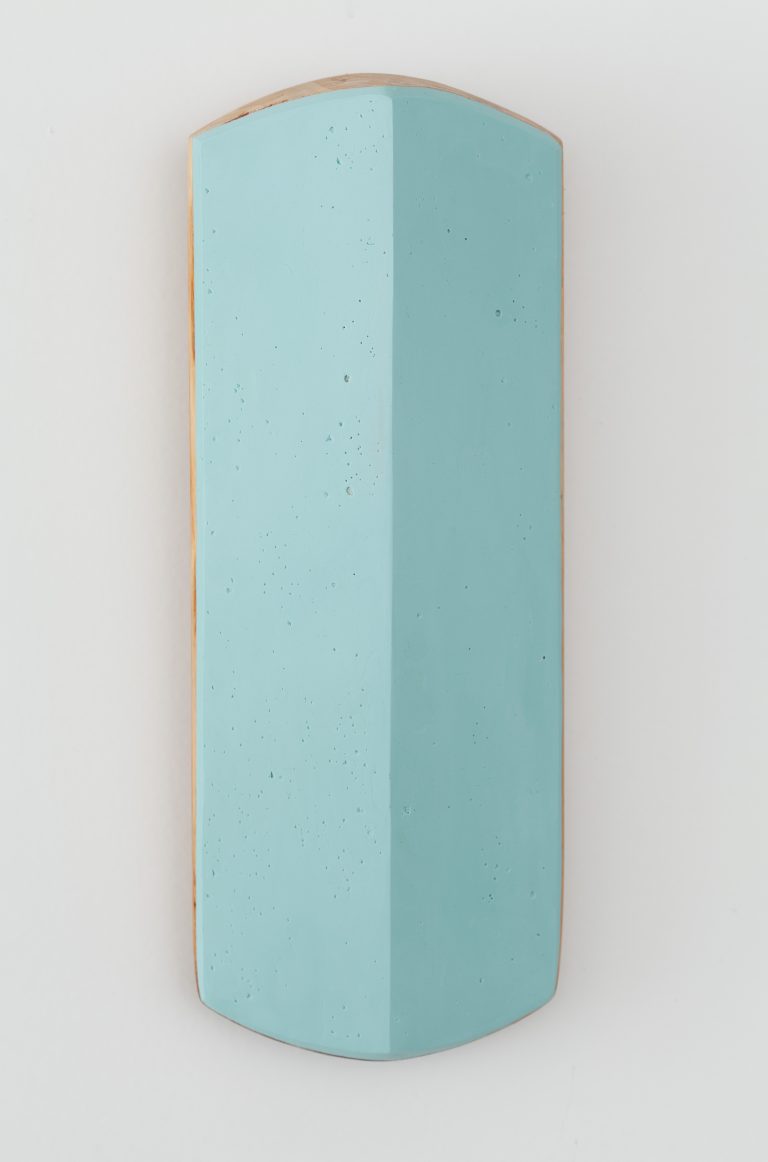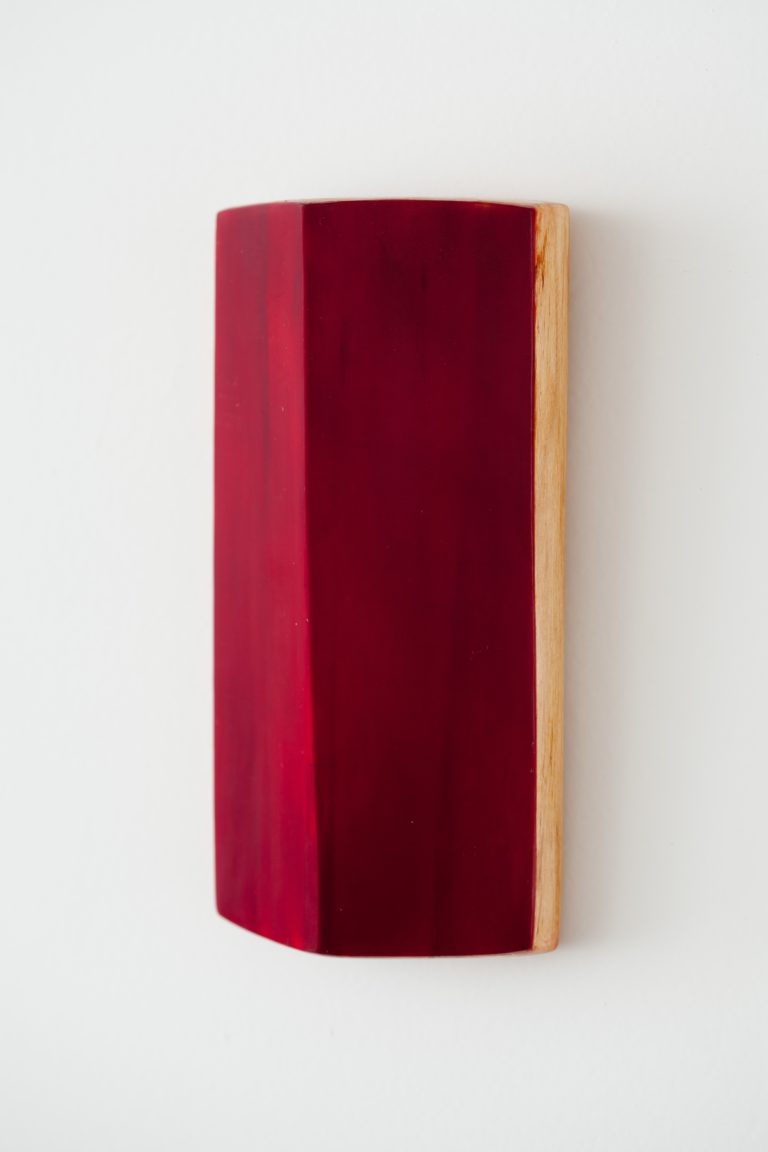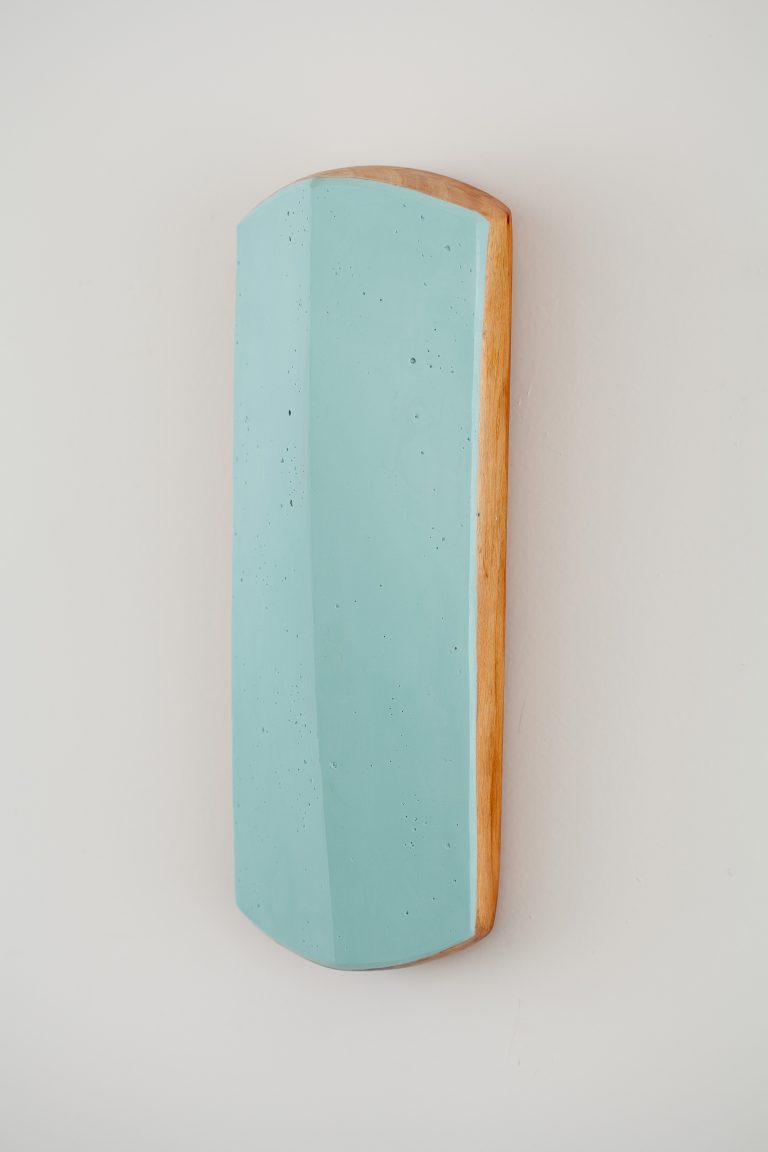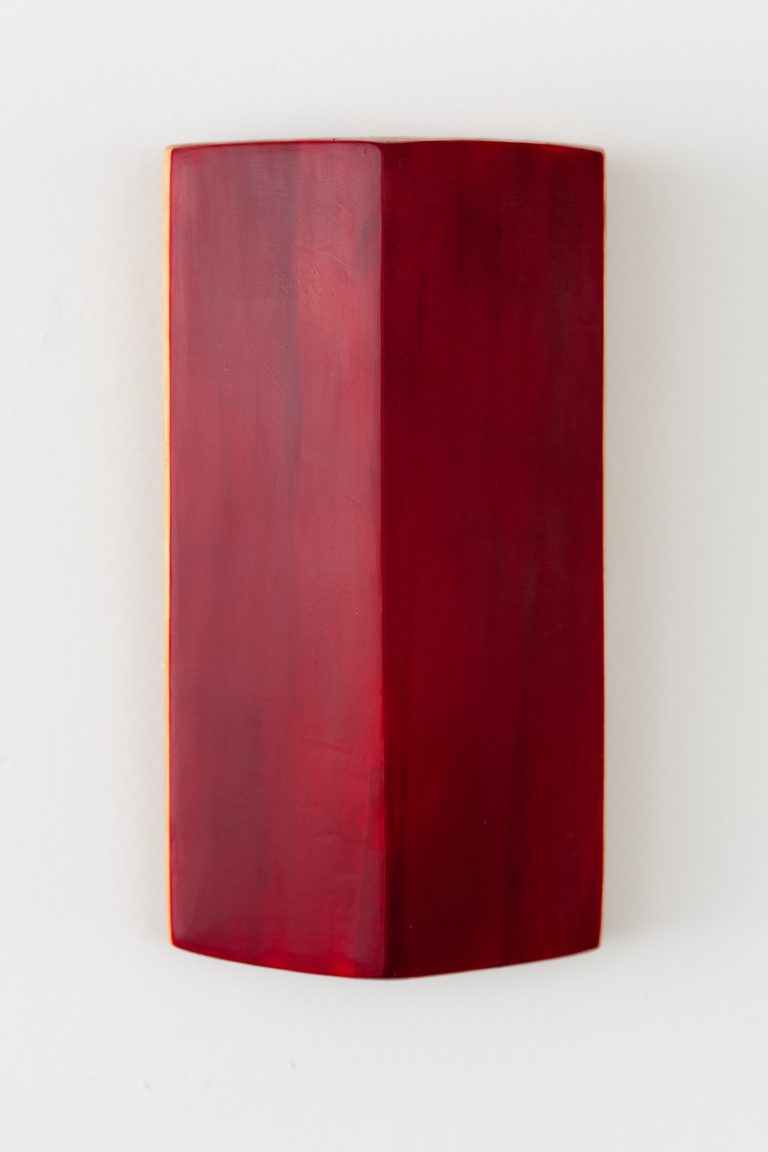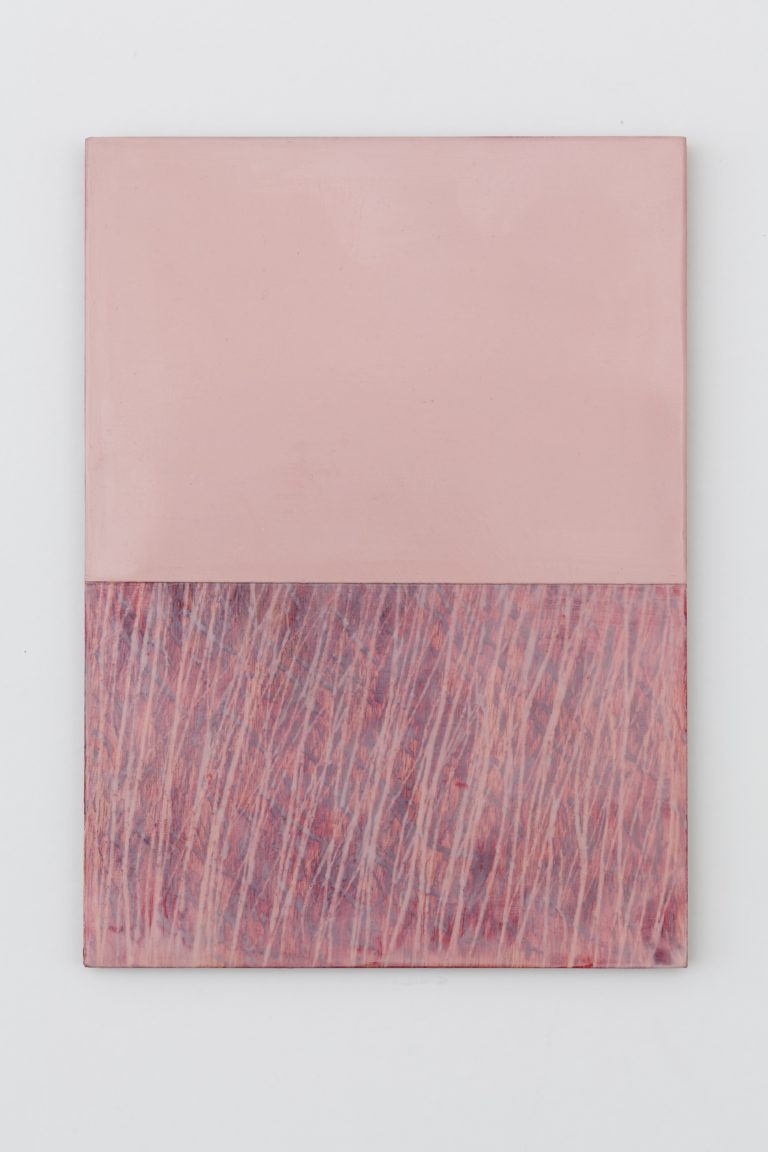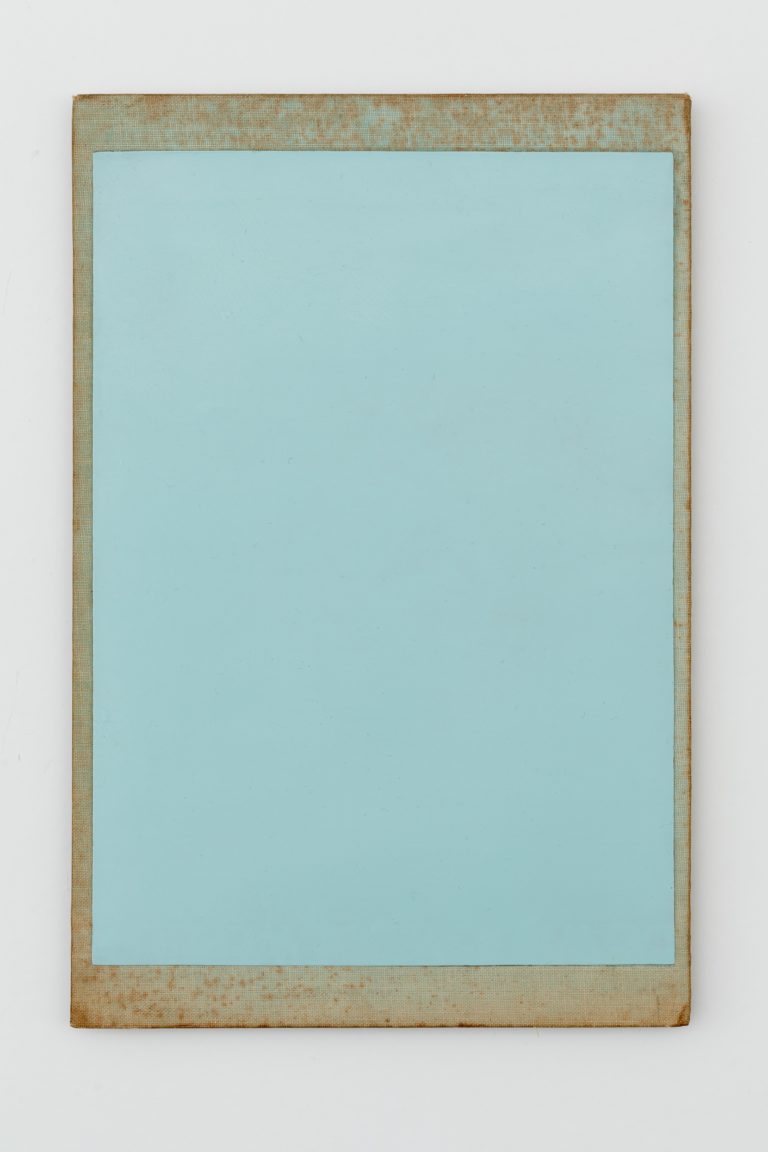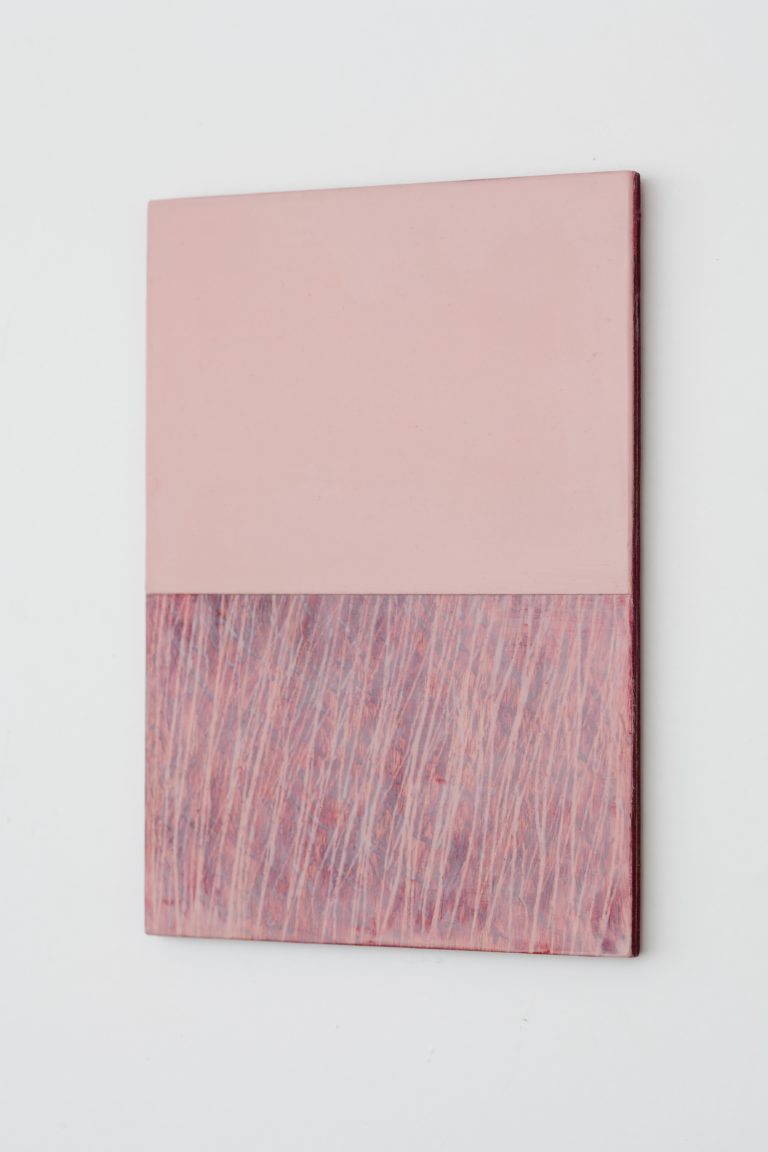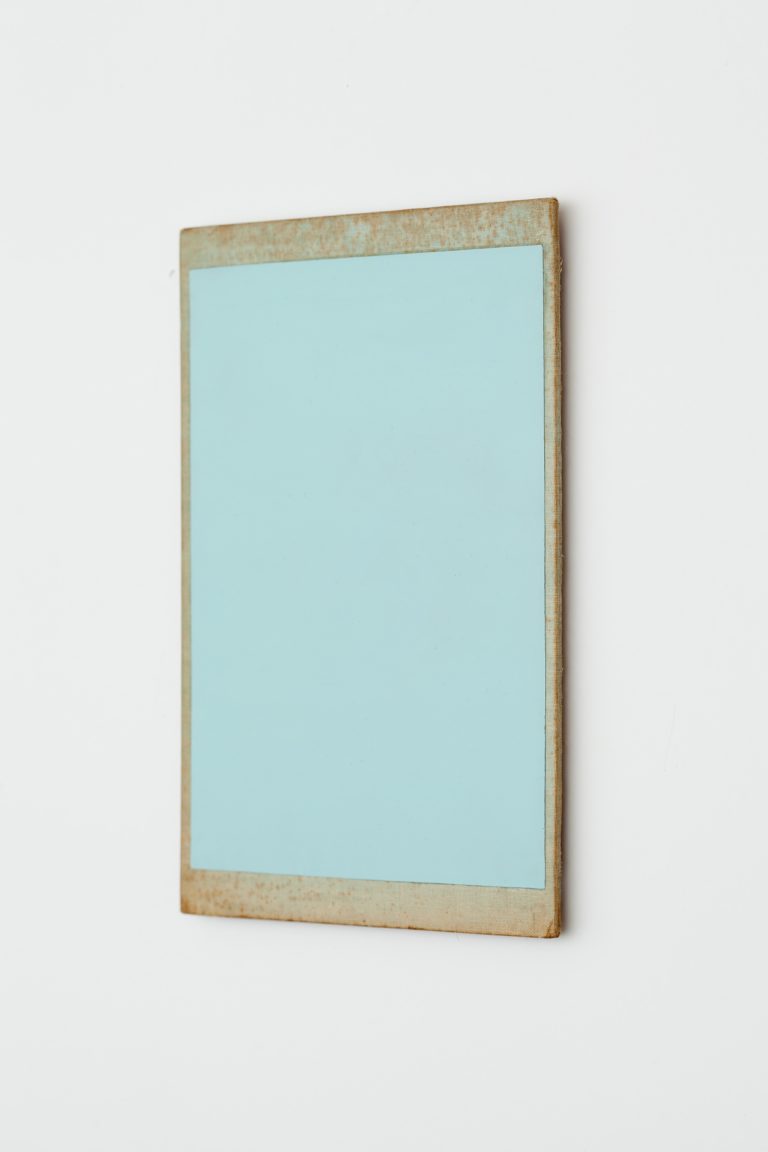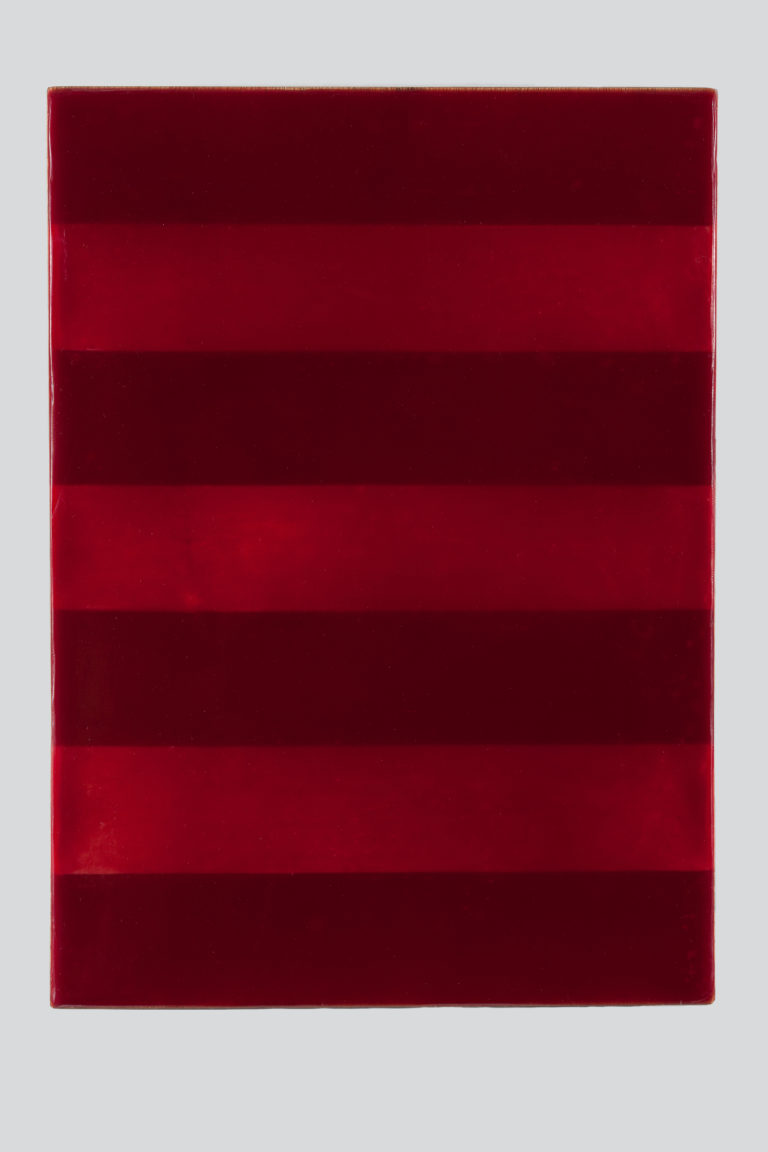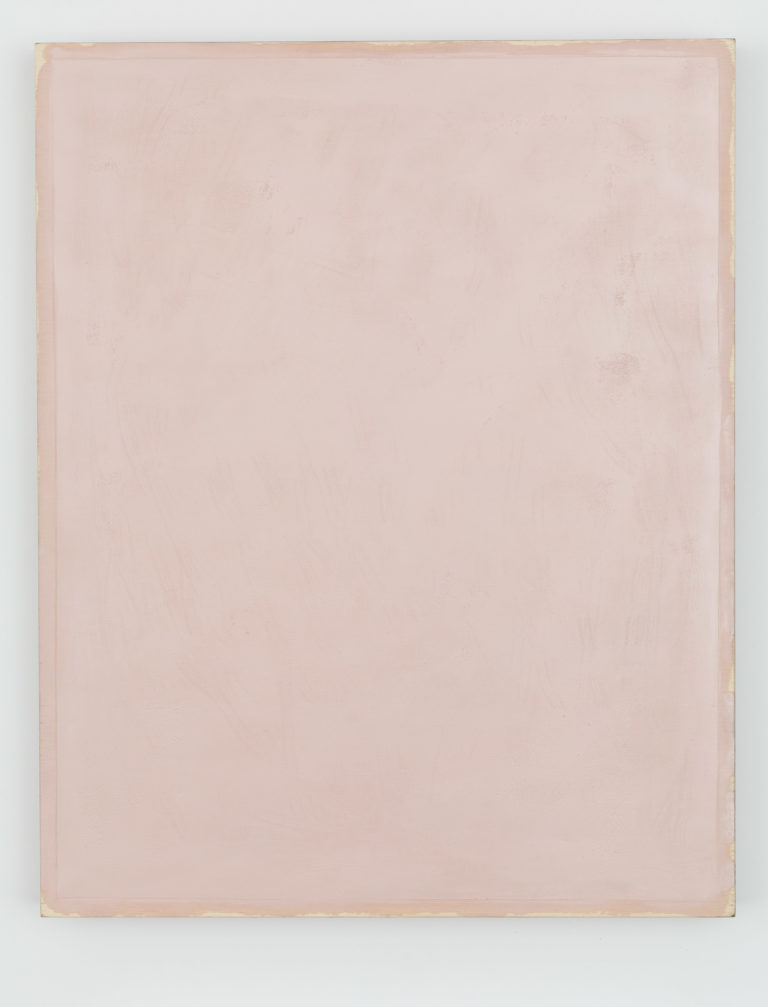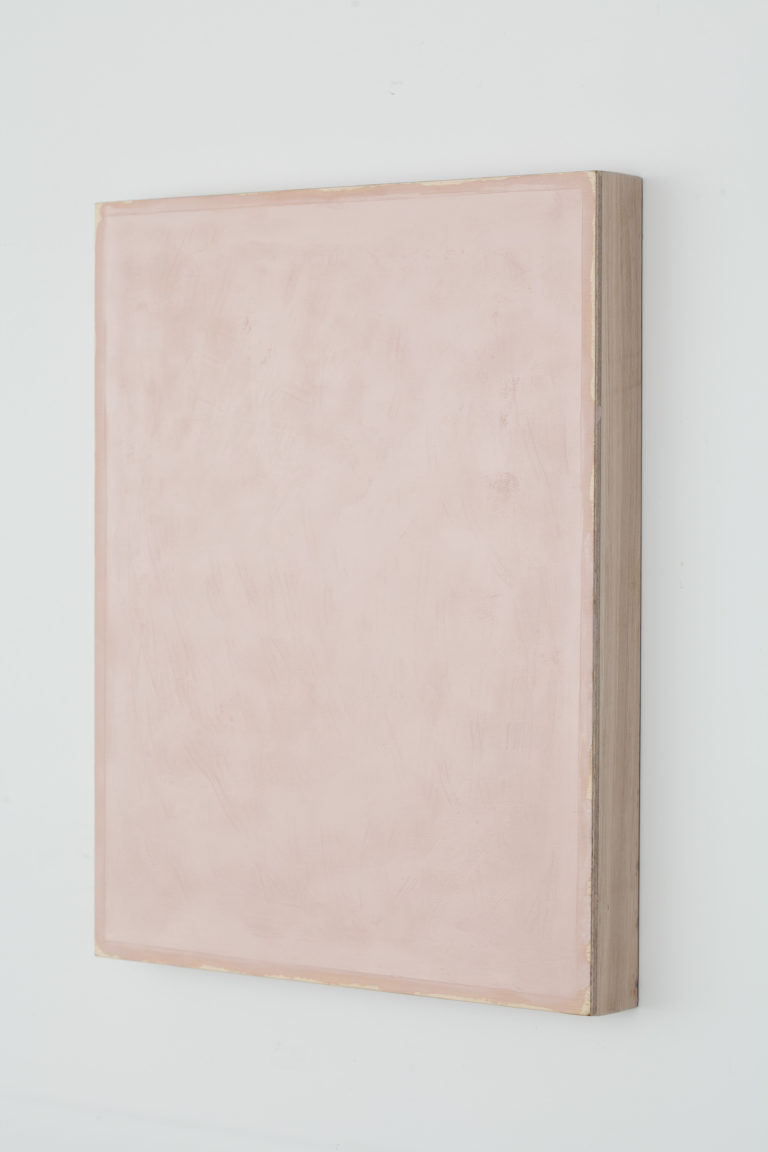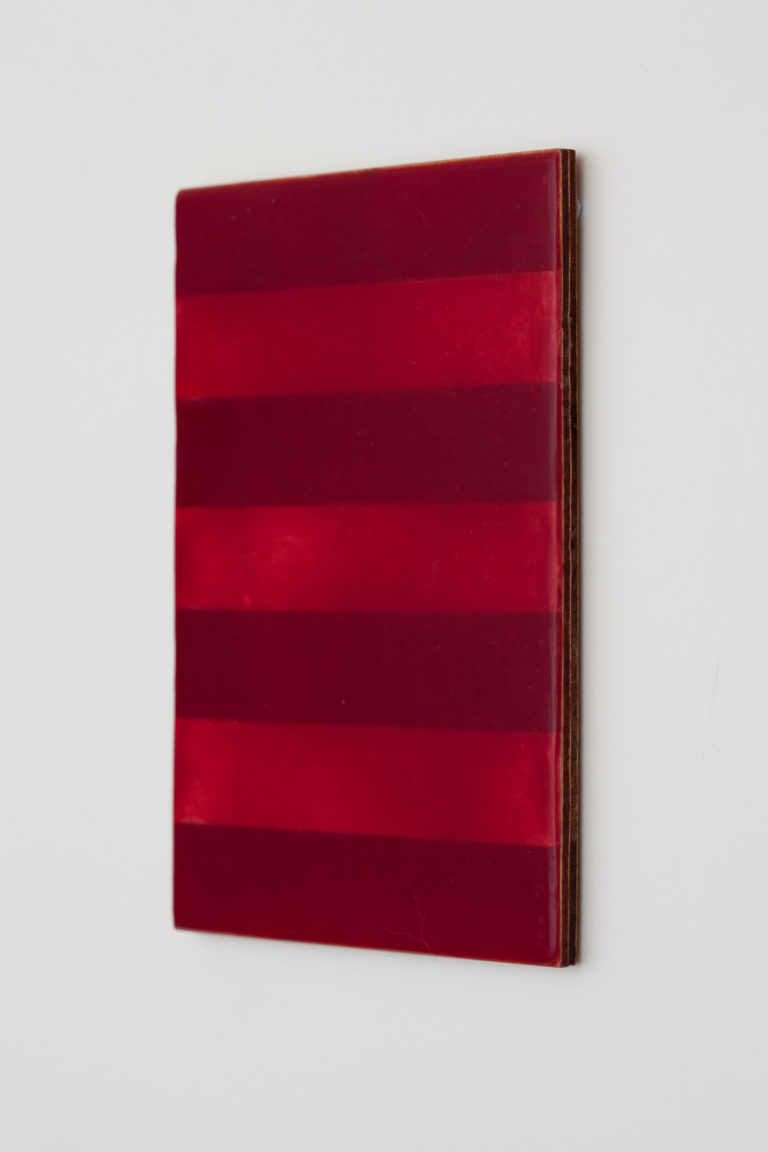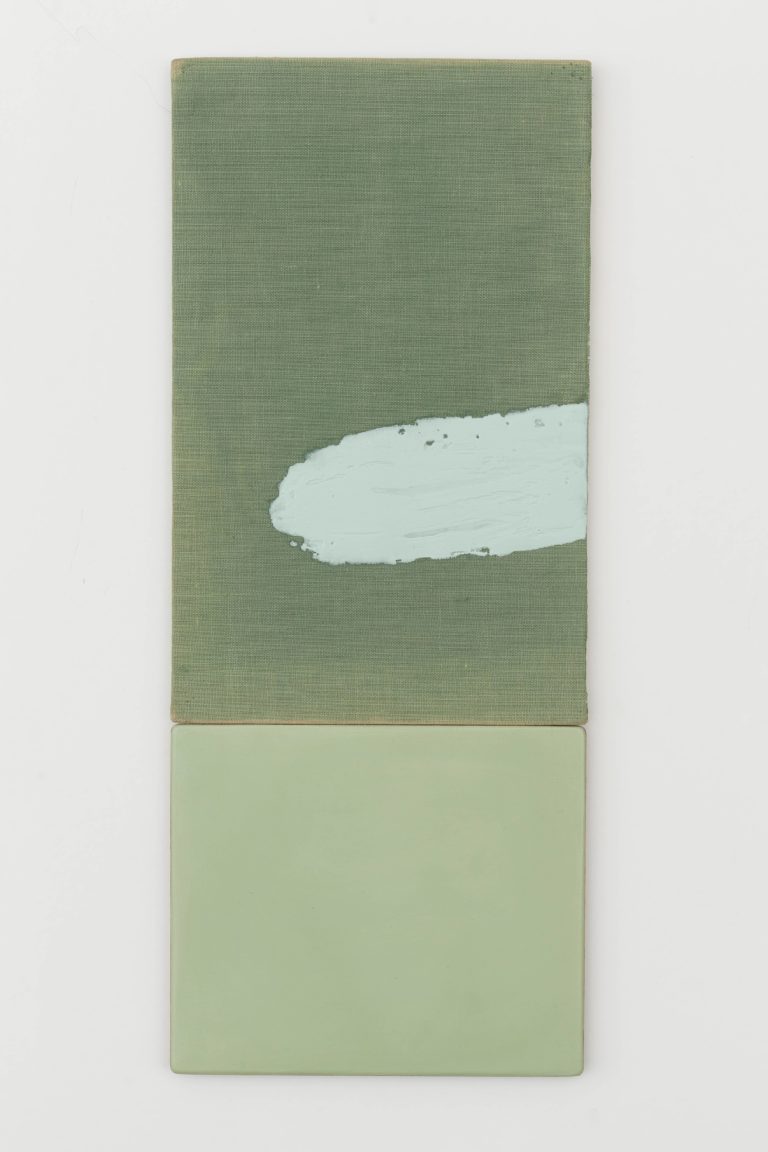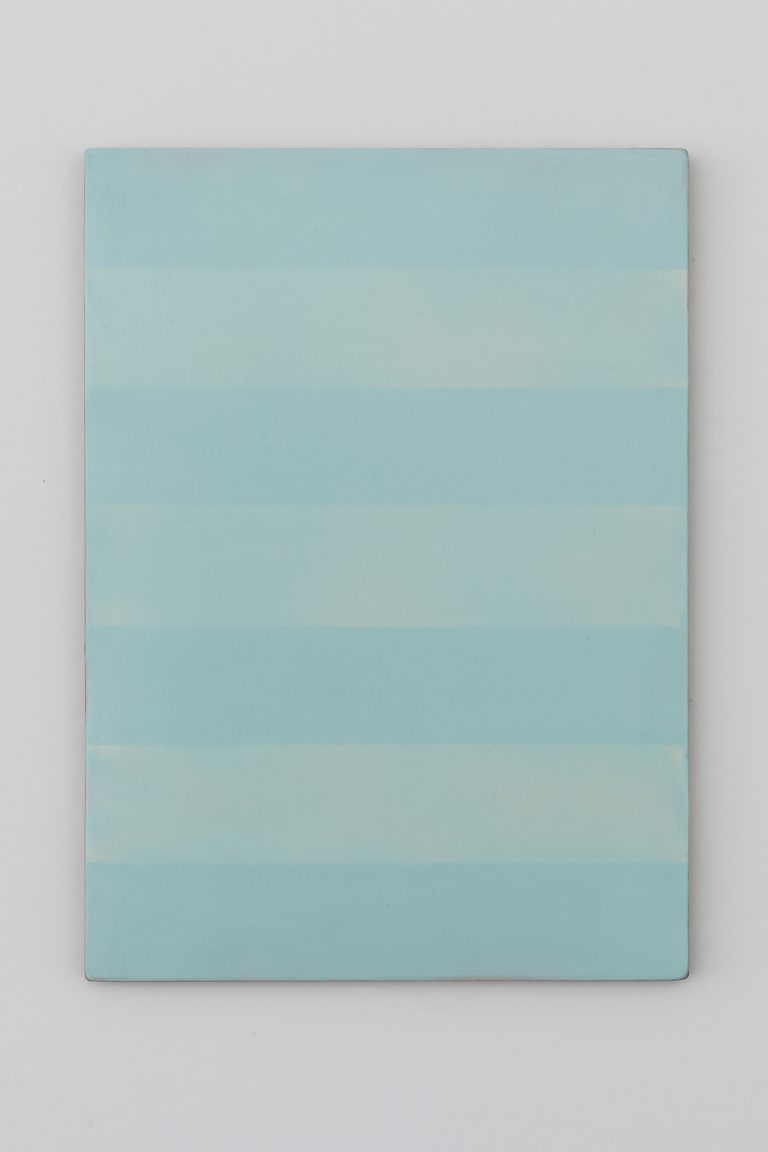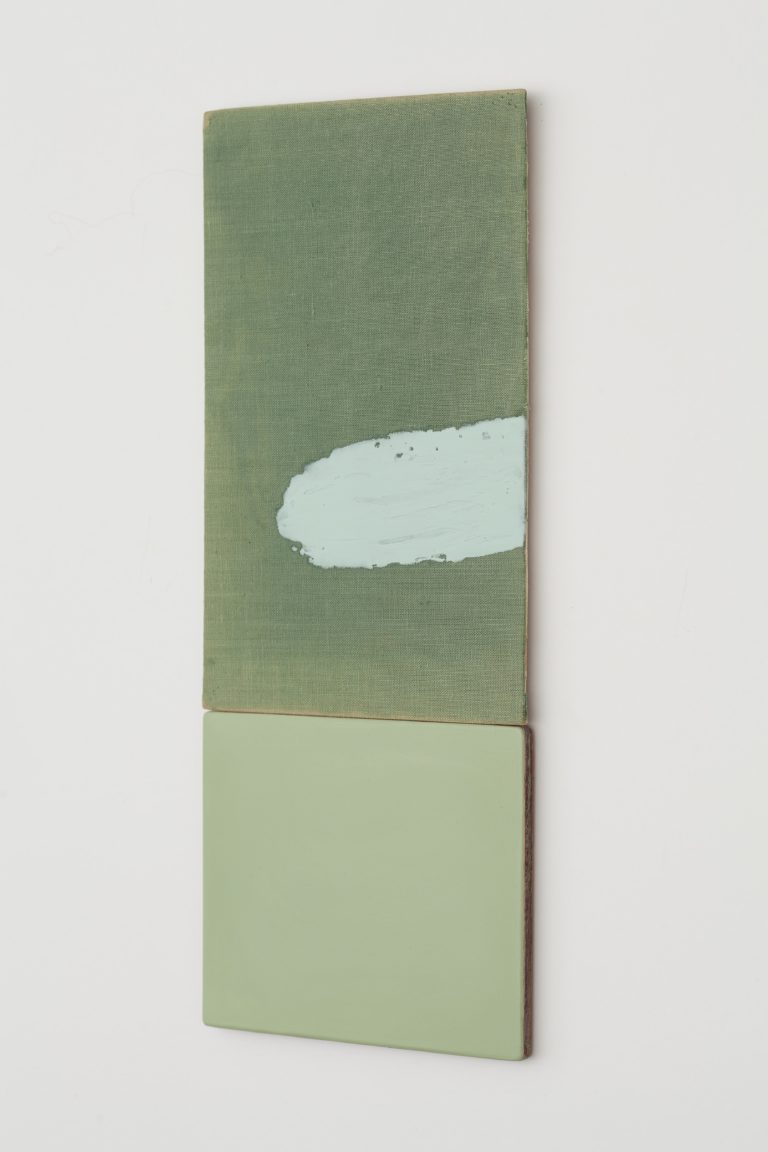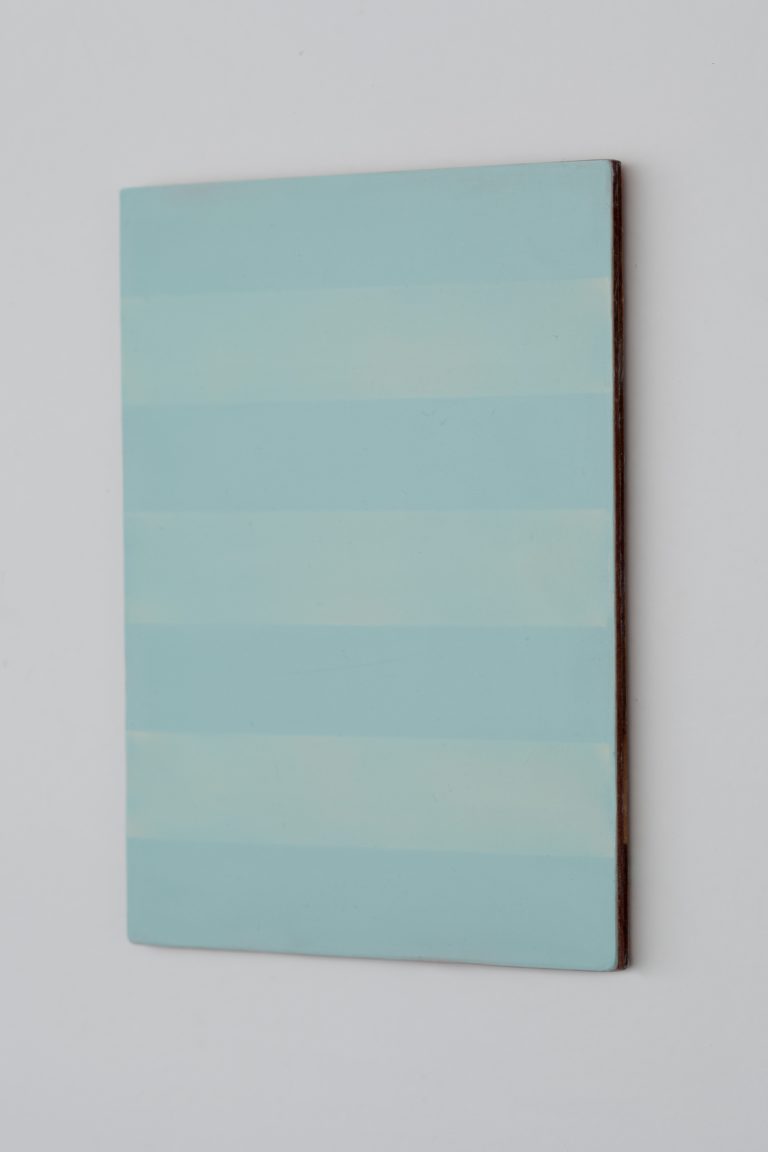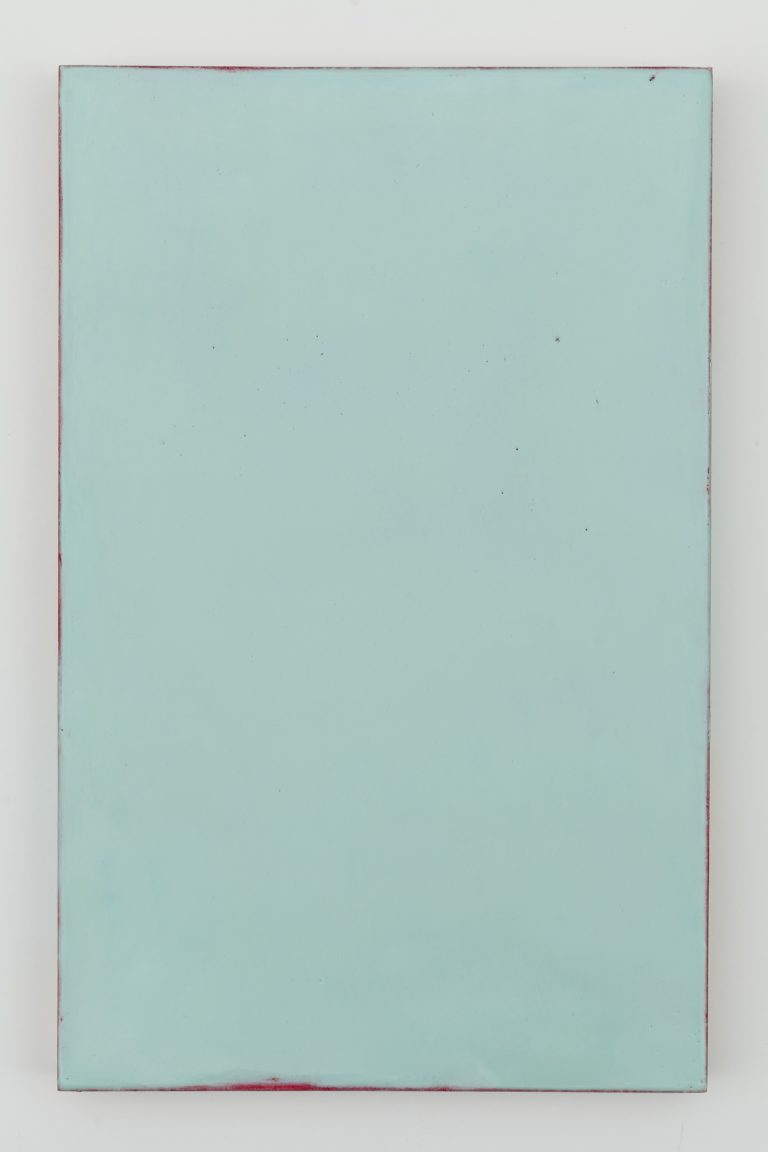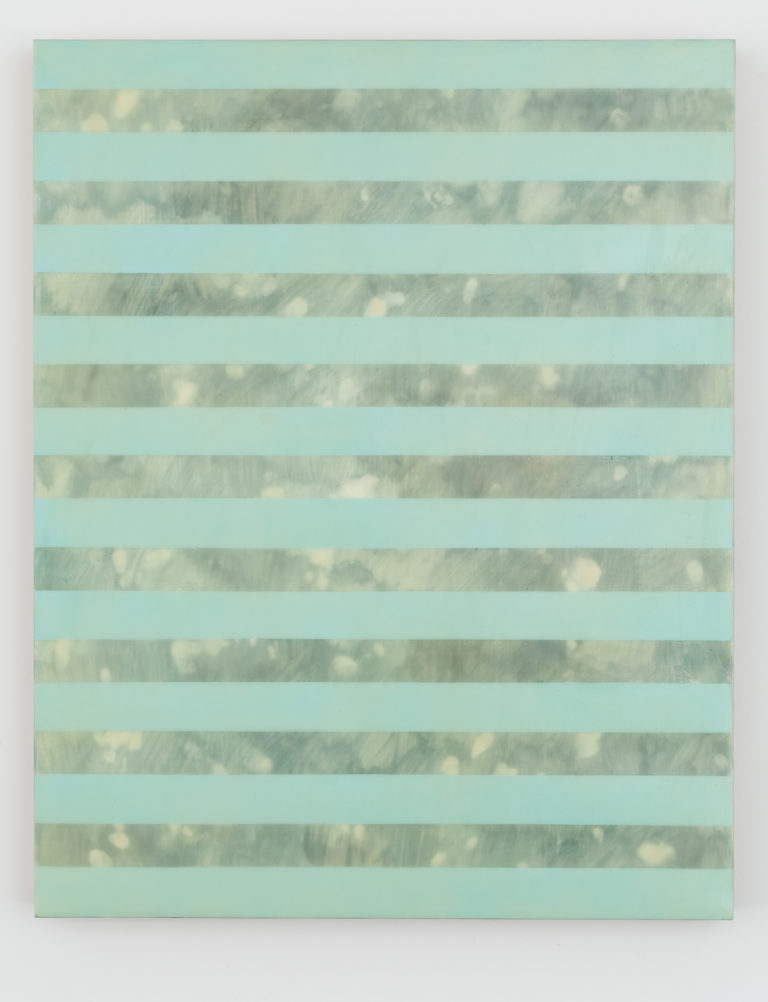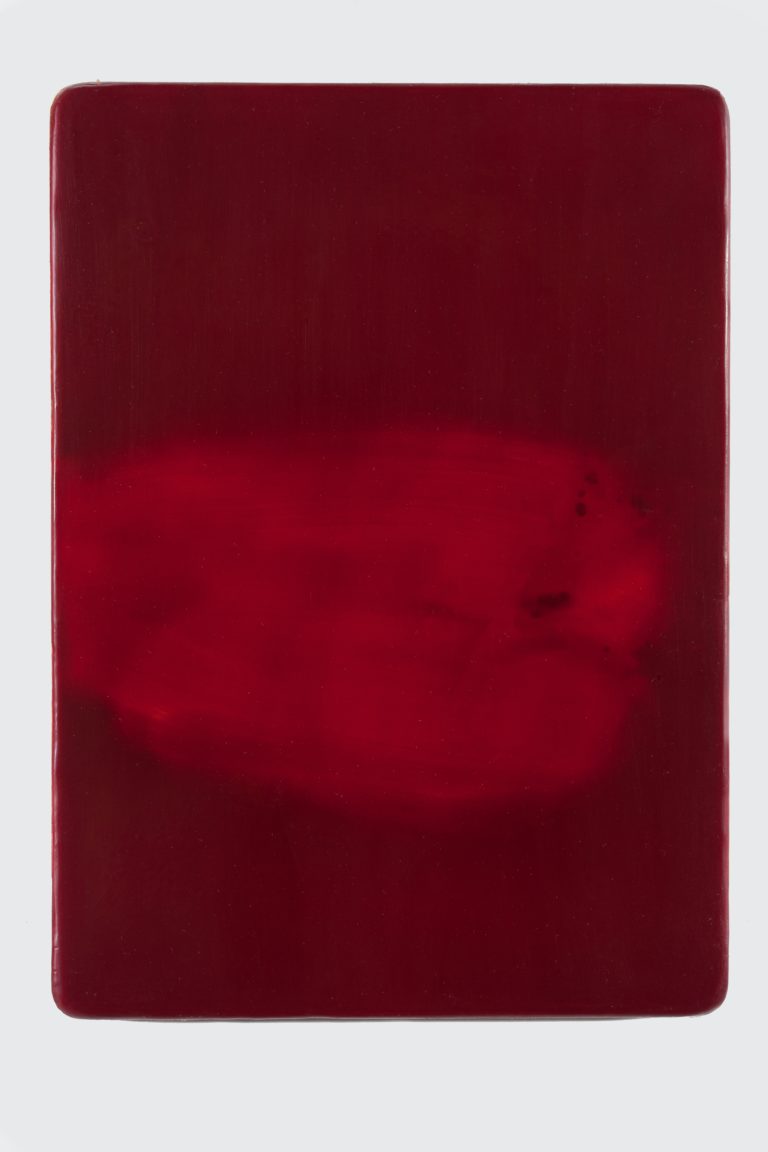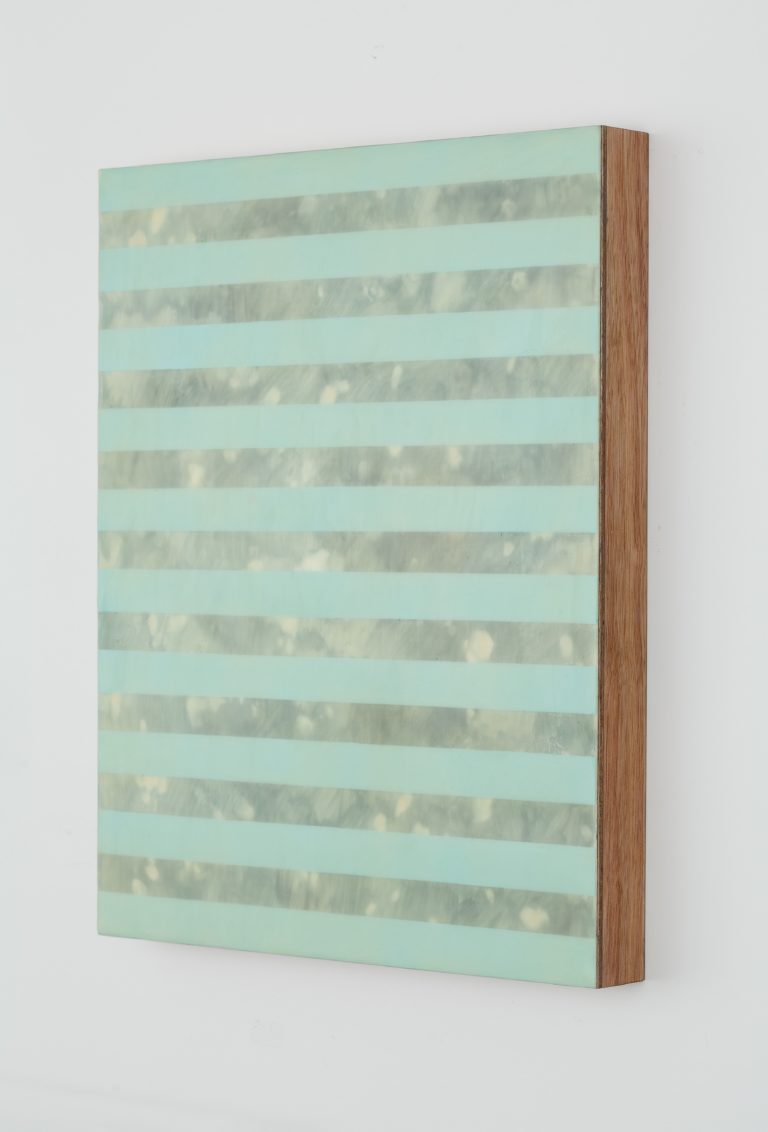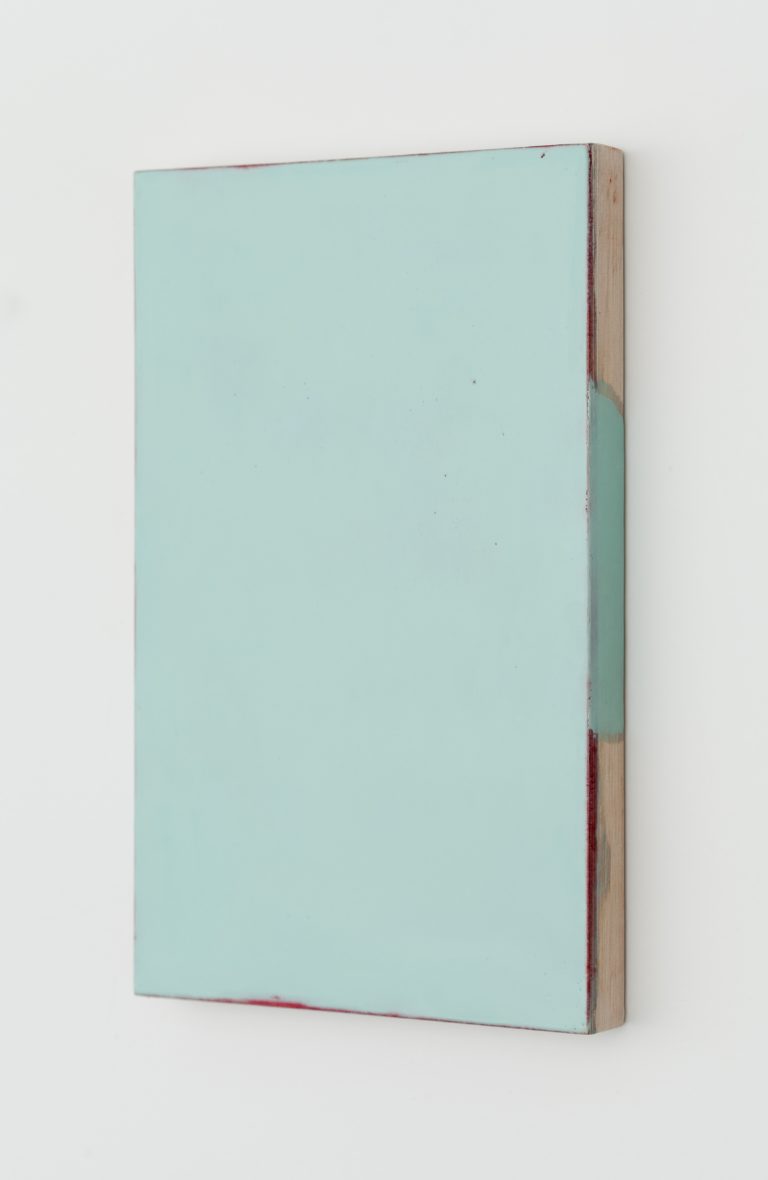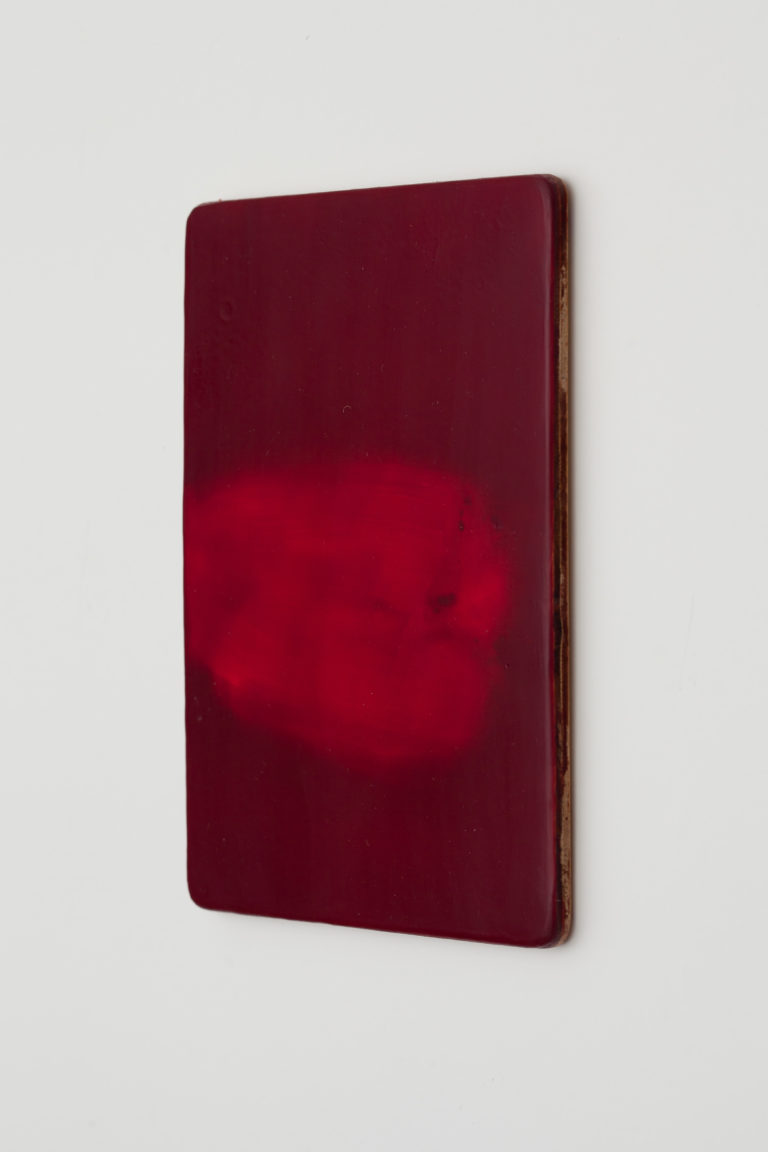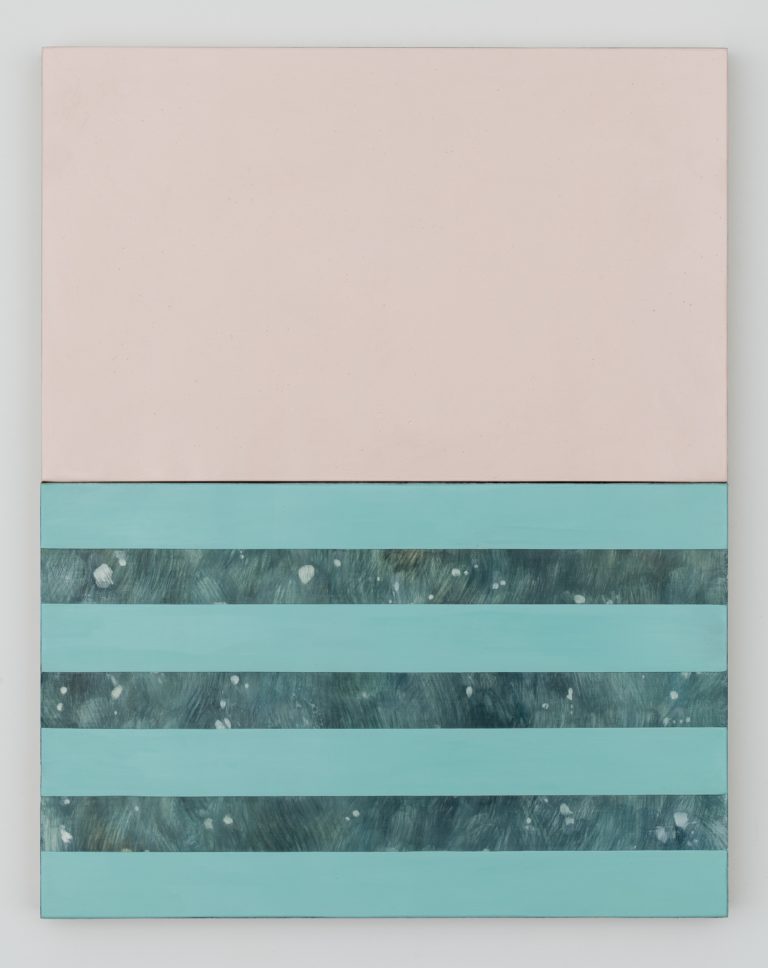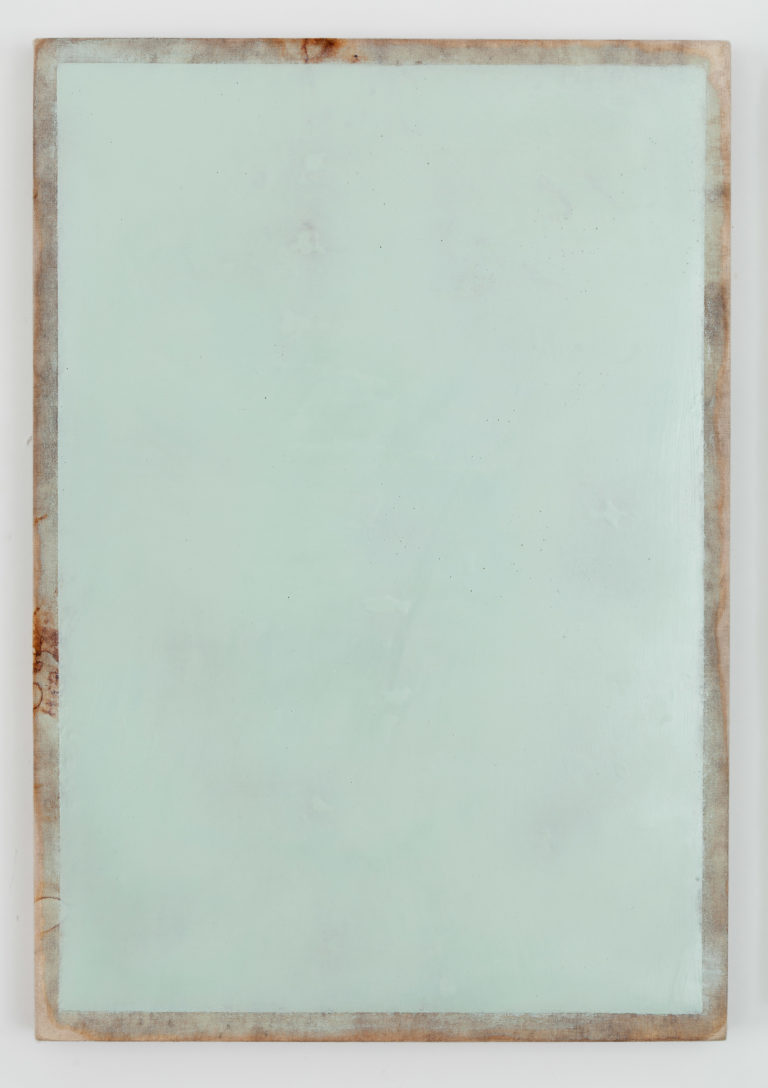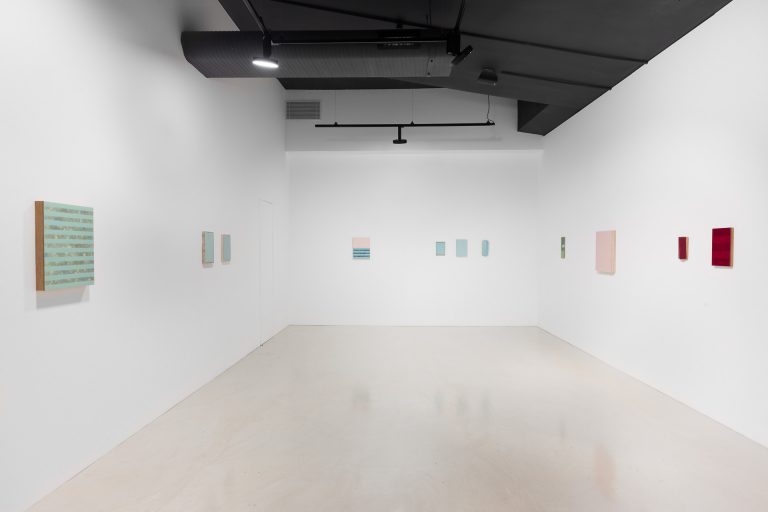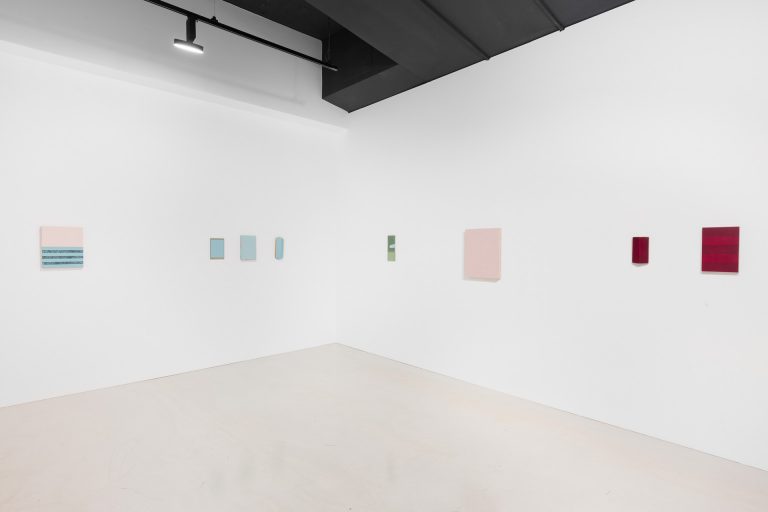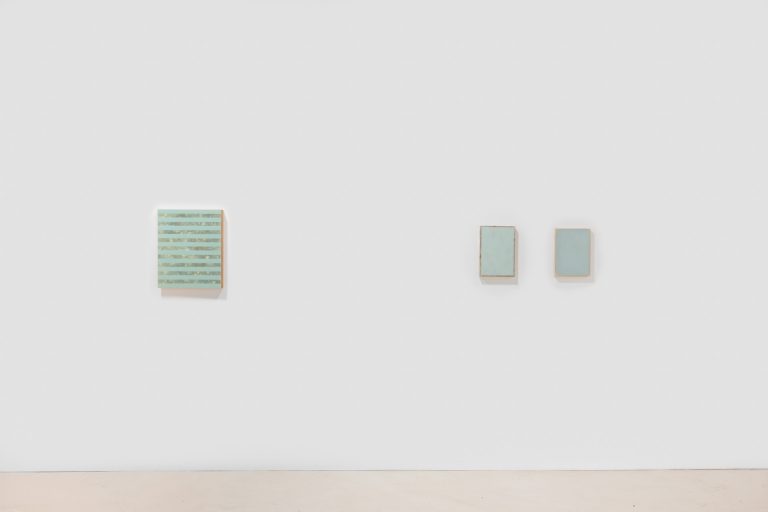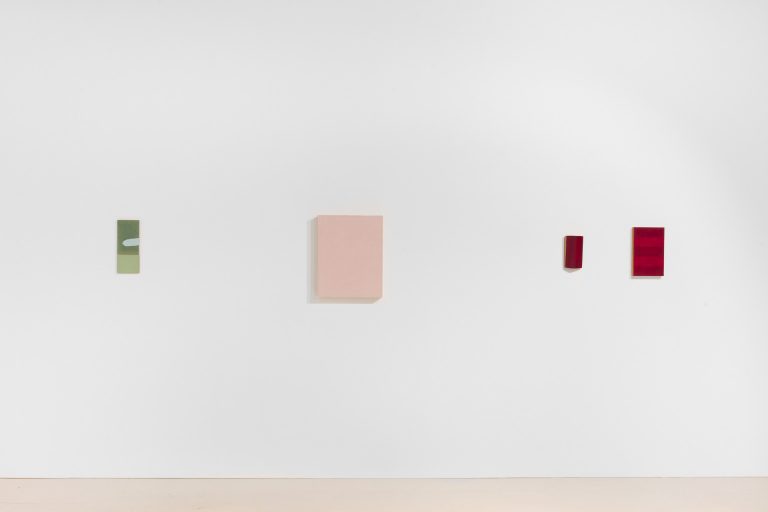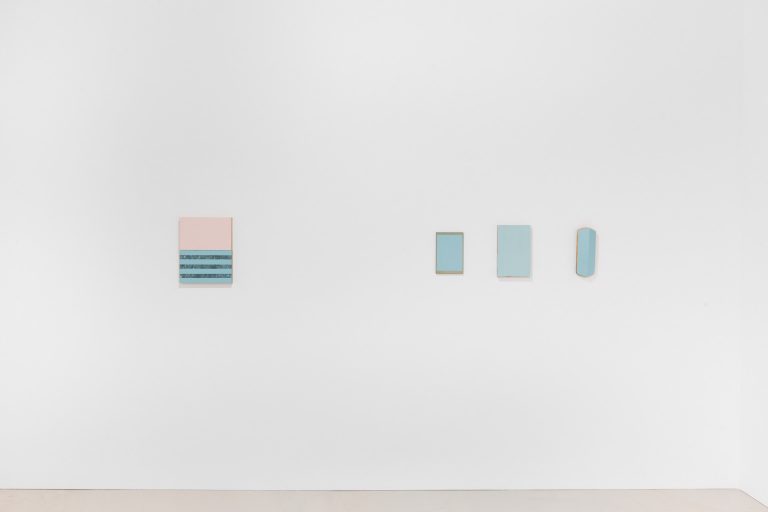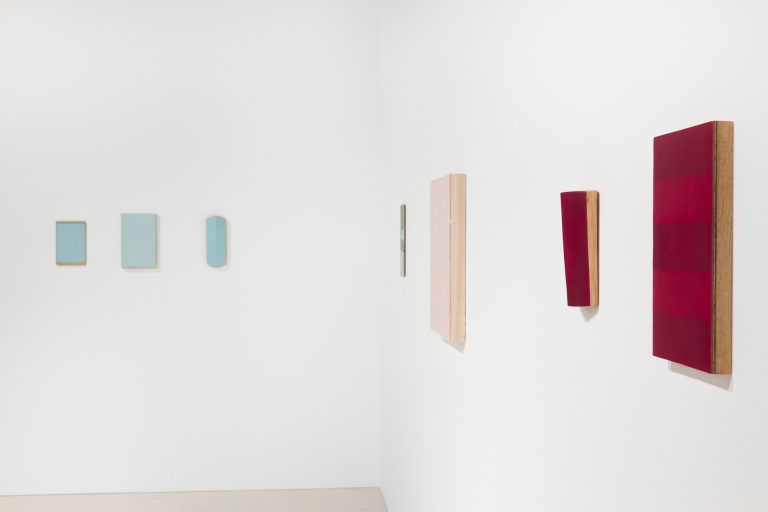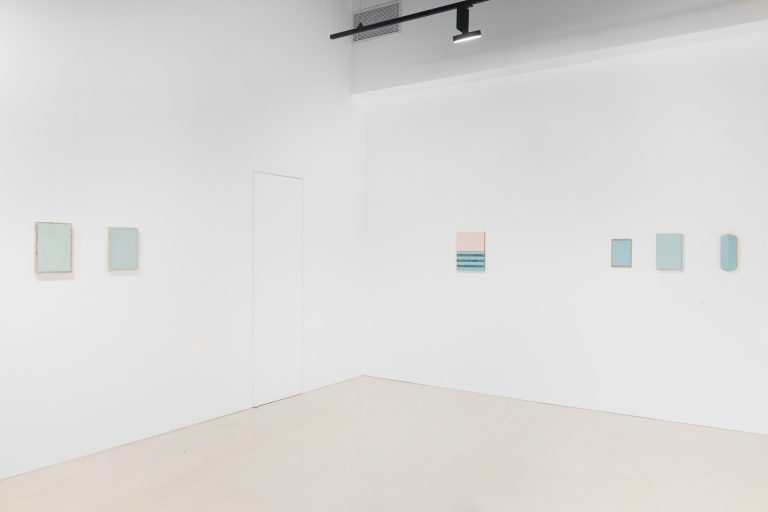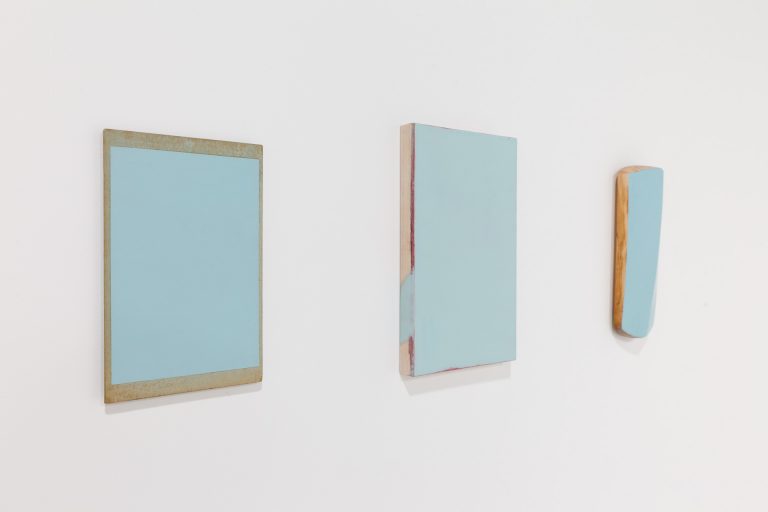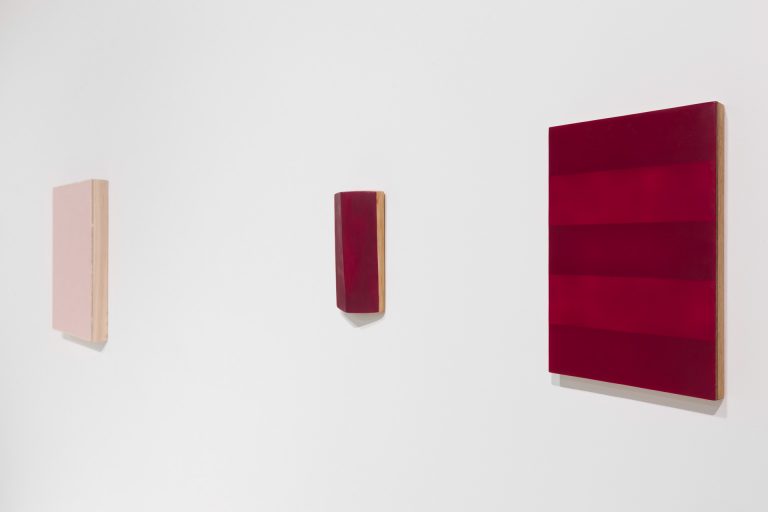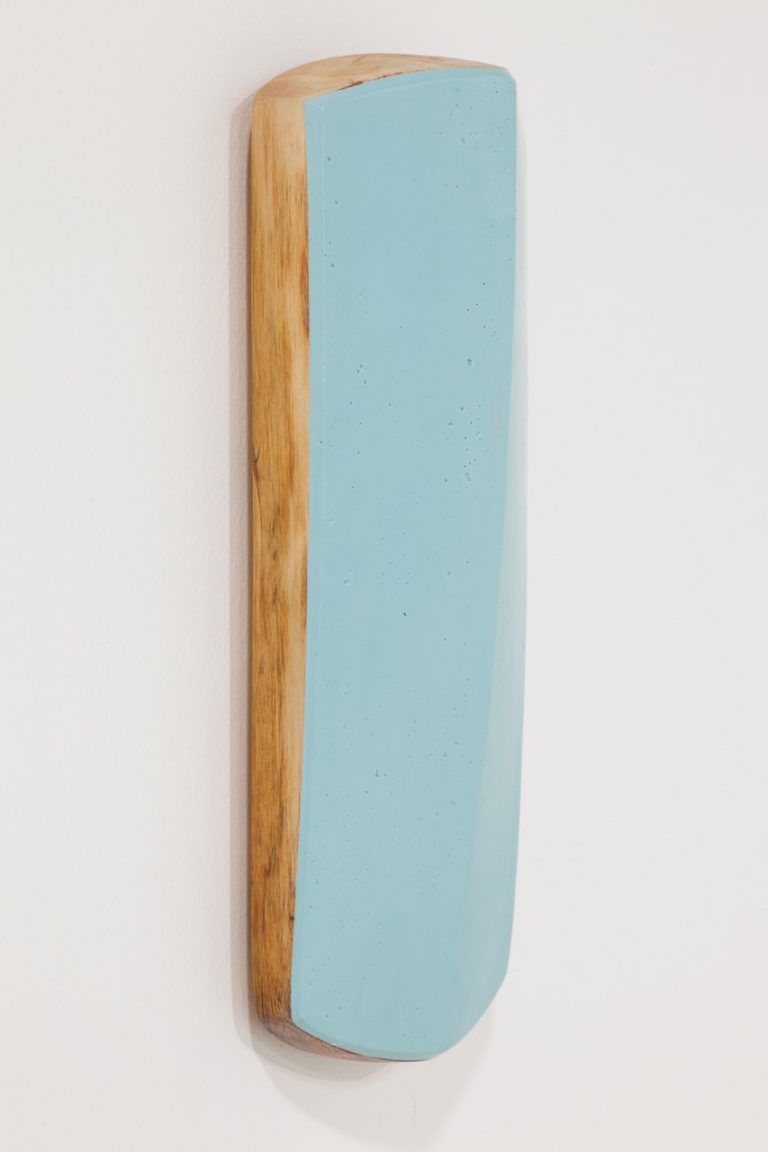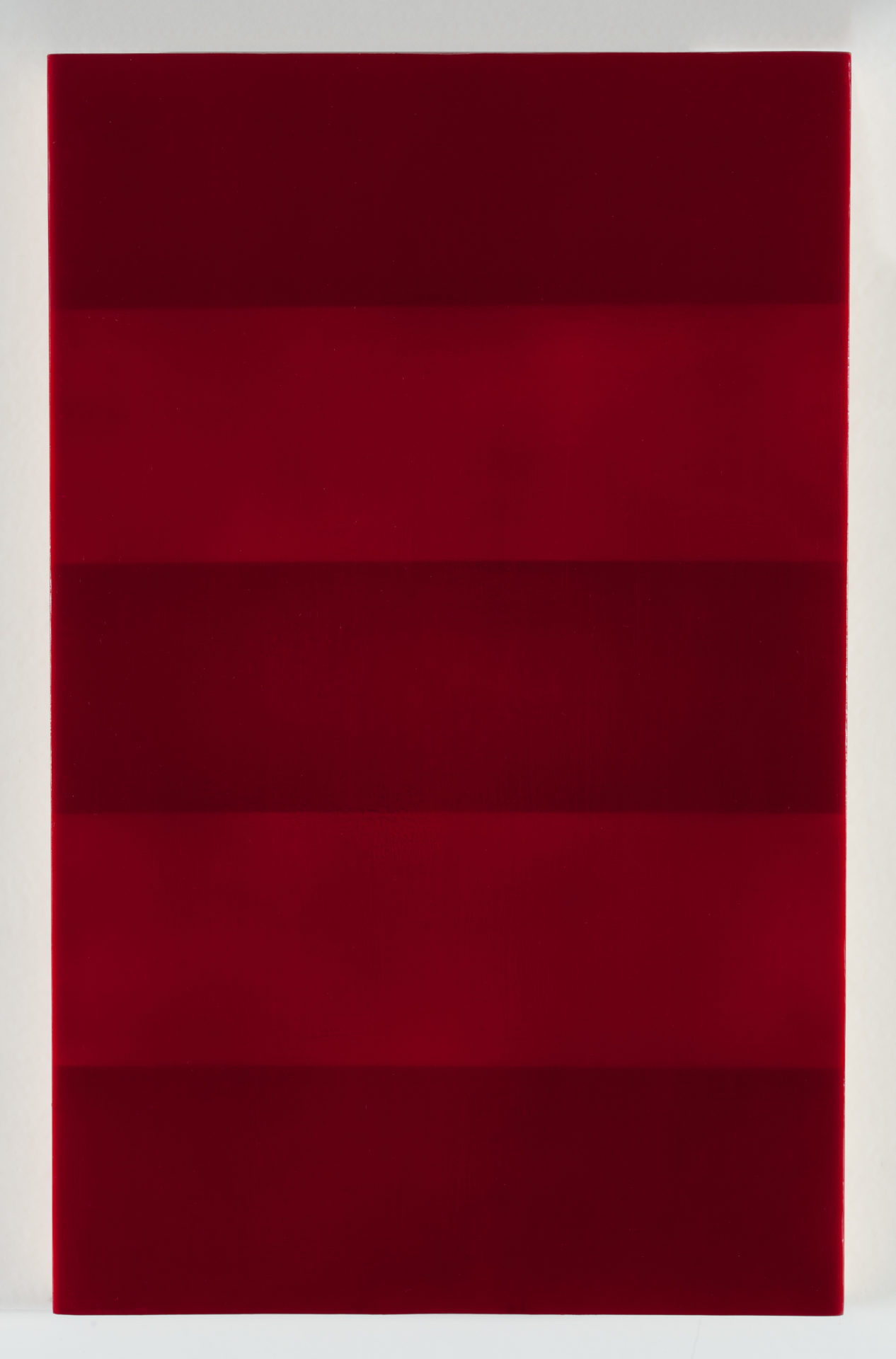
Artworks
Installations
Gravitations
Encaustic painting goes as far back as the 5th Century BC in Ancient Greece. Encaustic comes from the Greek word enkaustikos meaning “to burn in or fuse” and it predates oil and acrylic painting. We don’t often see it in contemporary art practices but it lives on in the work of Kat Shapiro Wood — an artist who pushes this technique forward by teasing out its visceral and aesthetic possibilities.
Shapiro Wood’s encaustic works have a sculptural depth so sensual you want to melt your fingers through them. Standing in front of them you have the sudden urge to come closer. Your eyes want to examine them side-on to find where the wax meets its support. You want to get to know them.
Like the work, her studio incites a similar type of intrigue. On the table lie many pots of different coloured liquids: they are the pigments mixed with the melted wax, but they resemble mysterious potions. The medium is brushed onto the surface, once fused and cooled, it is scraped back and the process is often repeated. A kind of alchemy takes place in the studio; the contrast with the sublime state of the finished works is enchanting.
In this series various found materials, timber, and vintage book covers act as the support for the encaustics. Bookbinding, an old and humble craft requiring a meticulous set of skills, resonates with the intricacy of Shapiro Wood’s own practice. While the compositions are pared-down, the process is complex and the works are tweaked until they achieve their harmony. But the artist does not aim for clean-cut perfection. This combined with her tactile and delicate handling of material steers away from the austerity prevalent in a lot of minimal art. The softness we find in Gravitations is alike the grids of Agnes Martin who left bare the pencil lines and imperfect vibrations. Shapiro Woods two-tone striped compositions as well as the diptychs (usually one half gestural the other monochromatic) also bring to mind many wonderful and energised series by Brice Marden. The warmer approach in this type of work speaks to nature. Imperfections like air bubbles occurring as a result of the wax cooling are often embraced by Shapiro Wood. The small bubbling on the skin of a leaf is not unlike in appearance: imperfect but beautiful, and we find these works bear the same energy and movement that is characteristic of life.
I find the tension between different tones, textures, and substrates in Gravitations moving. I see the wax and the old book covers and think of reading by candlelight. I am aware that these surfaces have already been touched and felt; the books handled and the wax shaped and polished. There is a patina and romance tied to these materials that have been carried through history, a romance that is embedded in the work.
In ‘Gravitations’, colour is emotive and transporting. Red is dominant in this series, of which two types appear: one is translucent and aqueous, another is richer and deeper — like dark blood. For me they manifest intensity. They are the reds of love, desire, and passion. The pink of ‘Untitled (don’t talk)’ reminds me of blushed cheeks on pale skin. Underneath the encaustic is silk organza — a thin weave sheer fabric used for bridal wear and nightgowns. I think of the Georgian regency in England and Jane Austen’s Emma. In ‘Untitled (fleet)’, jade exists in two forms: one dark, stained and worn, the other lustrous and ethereal. A pond surrounded by jagged rock faces appears in my mind. I think of Ancient China. The pale blue in ‘Untitled (Octavio’s tears)’ and ‘Untitled (and the land it swallowed the sky)’ is expansive. It is watery, emotional, vast, and vibrating. Like a deep well spilling over.
But words can’t completely capture what Shapiro Woods works do. They enter the soul in a way that can be deeply personal and cannot wholly be explained. They articulate the power of art as a visual form.
Elle Charalambu 2020

